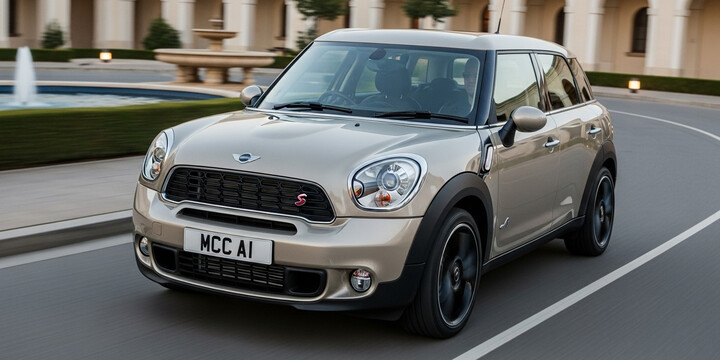
MINI ACEMAN (2024-)
The MINI ACEMAN (2024-) is an innovative and stylish compact SUV designed for urban dwellers and those seeking a versatile, fun-to-drive vehicle. As part of MINI’s renowned lineup, the ACEMAN stands out with its distinctive design, combining a sporty appearance with practical features, making it well-suited for city commuting, small families, and first-time drivers. Its popularity on MyCarCheck.com highlights its appeal in the used car market, with an average valuation of around £31,136—reflecting its status as a premium yet accessible choice. Typically, owners have driven it for short to moderate distances, emphasizing its role as an everyday vehicle.
What makes the MINI ACEMAN particularly notable are its standout design elements and modern features that offer a unique driving experience. It’s often praised for its agility, fuel efficiency, and high-quality interior, making it a strong competitor against similar small SUVs. Its reputation for reliability and fun driving dynamics have cemented its position in the rising compact SUV segment. Whether you're looking for a stylish car for city living or a reliable vehicle that combines practicality with personality, the MINI ACEMAN (2024-) is an excellent choice—bringing MINI’s signature charm to the compact SUV market in the UK.

average use

The data indicates that, for the most recent mileage readings, all recorded vehicles of the MINI ACEMAN (2024-) model have been documented within the 0 to 10,000-mile range, accounting for 100% of the samples. This suggests that these vehicles are very new or have low mileage, which is typical for recent model releases.

vehicle values

The data shows the distribution of private sale prices for 2024 MINI ACEMAN vehicles in the UK. The most common price range is between £30,000 and £31,000, accounting for 27% of sales, followed closely by the £31,000 to £32,000 range at 21.6%. Smaller percentages of sales occur in the higher brackets from £32,000 upwards, with the 36,000 to 37,000 range comprising about 8.1% of sales. Notably, only a small fraction of vehicles are sold above £35,000, suggesting that the majority of private sales cluster around the £30,000 to £32,000 mark. The data indicates a relatively tight pricing band with a significant concentration in the low to mid-thirty-thousands.

production years

The data indicates that among MINI ACEMAN vehicles from 2024 onward, approximately 35.1% were manufactured in 2024, while the remaining 64.9% are from 2025. This suggests a significant majority of these vehicles are relatively new models from 2025, which may be indicative of high demand or recent production increases for the latest model year. The surprisingly high proportion of 2025 vehicles could also reflect recent manufacturing schedules or market trends favoring newer vehicles.

colour popularity

The data shows that for the 2024 MINI ACEMAN, white is the most popular paint colour, accounting for 24.3% of the vehicles. Blue and grey are also common, making up 21.6% and 18.9%, respectively. Black and red are less prevalent, comprising 13.5% and 10.8%, while green and red are the least frequent, each representing 10.8%. Overall, the palette features a diverse range, with white leading as the most common choice among buyers.

ownership cycle

The data indicates that the vast majority of MINI ACEMAN (2024-) vehicles, about 81.1%, have only one registered keeper. A smaller proportion, 13.5%, have no registered keepers recorded, which could suggest data gaps or recent changes. Additionally, 5.4% of the vehicles have two registered keepers. This distribution suggests that most owners tend to retain ownership without frequent changes, with a relatively small number experiencing multiple owners or record uncertainties.

engine choices

The data indicates that all MINI ACEMAN (2024-) vehicles in the sample are powered solely by electricity, with no information available on their engine capacity. This suggests a fully electric model lineup for this vehicle, reflecting a shift towards electric propulsion in this range. The absence of engine capacity data further emphasizes the electric nature of these vehicles, which do not rely on traditional internal combustion engines.












